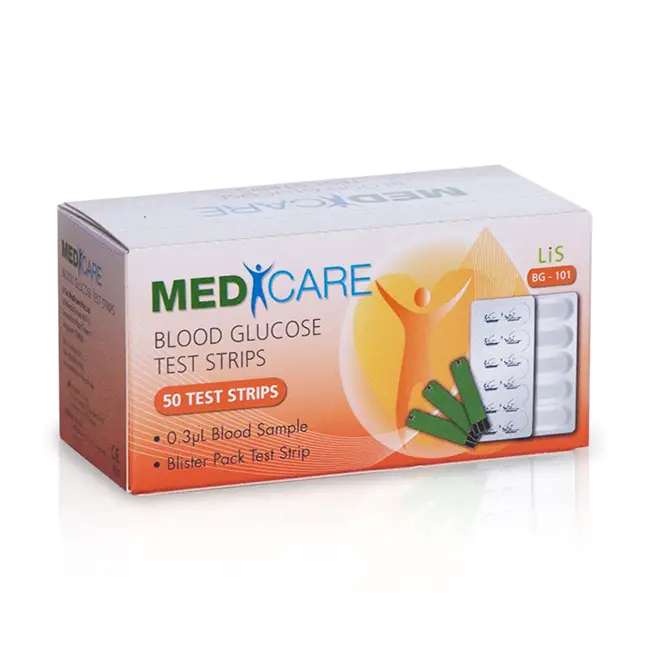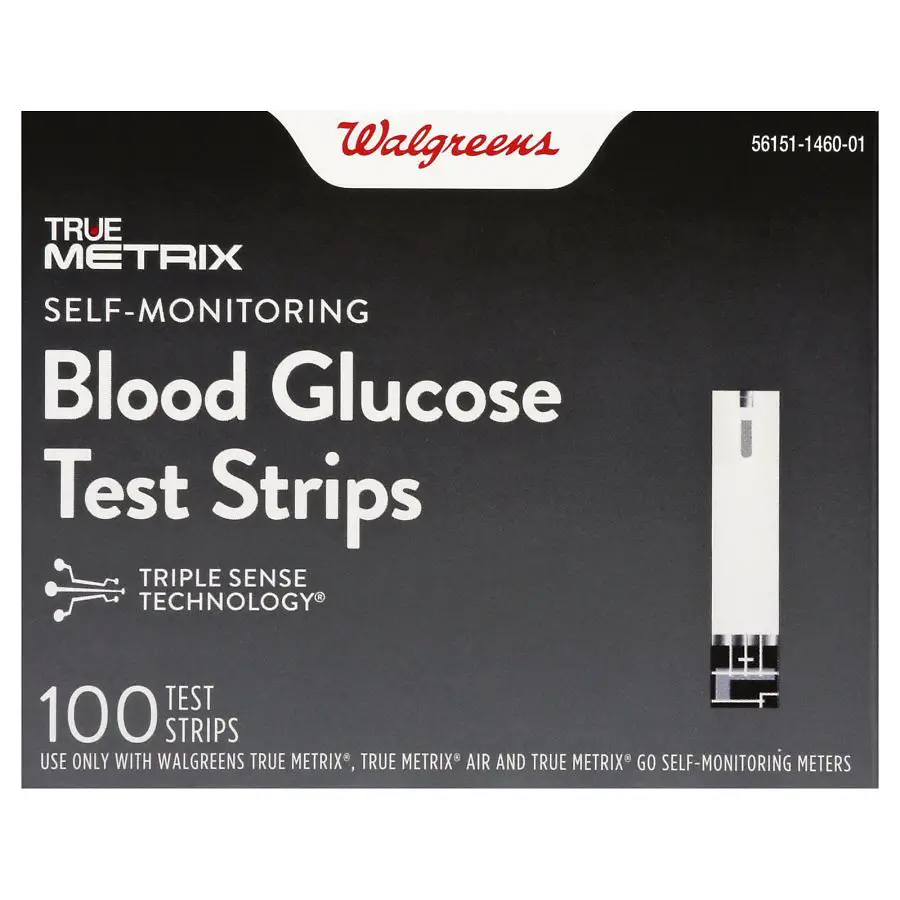Smart Insulin Pens Insulin Pen Needles And Syringes
Devices used to administer insulin– including insulin pens, needles, and syringes – are covered under Medicare Part D for Medicare patients with diabetes. One unique product in this category available from US MED is the InPen, a smart insulin pen that offers personalized recommendations for insulin dosage. Along with that, we carry needles and syringes in various sizes.
Medicare & Diabetic Supplies: Coverage And Best Plans
Find Cheap Medicare Plans in Your Area
Diabetic supplies are covered by Medicare when they’re medically necessary and when you have a prescription.
Medicare Part B covers screenings, doctor exams, glucose monitors and diabetic shoes. Medicare Part D covers insulin and diabetes medications. And Medicare Advantage plans bundle all your coverage within a single plan.
Beginning in 2023, insulin copays will be capped at $35 per month, as a result of a change in federal law.
How To Get Help With Medicare Coverage For Diabetic Shoes
If you have diabetes and need therapeutic shoes, your doctor can help get you started. When you add Medigap coverage, you can be doubly assured your shoes wont break the bank.
Your Medigap plan can help with coinsurance, copays, and your Part B deductible. Our agents can help find the best options for you. Call us today for a quote in minutes! Or, if you prefer, you can complete an online rate form, and a member of our team will reach out to you.
- Was this article helpful ?
You May Like: Will Medicare Cover Lasik Surgery
Diabetic Foot Exam And Shoes
Cost with Part B: 20% or about $8 to $47 for diabetic footwear or inserts
Coverage with Part B: Those who have diabetes have coverage for both regular foot exams and diabetic shoes.
An annual foot exam is covered for those who have diabetesrelated lower leg nerve damage and haven’t seen a foot care professional for other reasons that year. You’ll pay 20% of the cost for this exam and any associated treatment.
Medicare will also cover shoes for diabetics when they’re prescribed and fitted by a qualified doctor such as a podiatrist, pedorthist or prosthetist. Each year, you’ll have coverage for either of the following:
- A pair of depth-inlay shoes and three pairs of inserts
- A pair of custom-molded shoes if you cant wear depth-inlay shoes because of a foot deformity, and two additional pairs of inserts
To be eligible for diabetic shoe coverage, you need to have diabetes, be treated under a comprehensive diabetes plan and have at least one of the following:
- Poor circulation
- Nerve damage because of diabetes with signs of problems with calluses
- A deformed foot
| Glucagon-like peptide 1 agonists | Adlyxin , Byetta, Bydureon , Ozempic , Tanzeum , Trulicity and Victoza |
| Sodium-glucose cotransporter 2 inhibitors | Farxiga , Invokana and Jardiance |
Best Medicare Plans For Diabetics

The best current Medicare coverage for diabetics will include either a Part D plan or a Medicare Advantage plan that participates in the Insulin Savings Program .
Effective in 2023, all plans will have a maximum $35-per-month copay for insulin, as a result of a new federal law passed in August 2022.
The $35 rate begins right away, even if you haven’t met the plan’s deductible. And the 30-day supply is based on the amount of insulin you need, rather than a standardized amount.
Don’t Miss: Can I Sign Up For Medicare Part B Online
How To Sign Up For Medicare
If you are close to turning 65 and are not getting Social Security or Railroad Retirement Board benefits, you must sign up for Medicare. Even if you are eligible for premium-free Part A coverage, you still must enroll.
If you arent getting Social Security benefits, you will not automatically receive any information from Medicare. You must call Social Security at least three months before the month you turn 65 to avoid any late penalties.
To be eligible for Medicare, you must meet these requirements:
- You are turning 65 or have a qualifying disability.
- You or your spouse worked and paid Medicare taxes for at least 10 years.
- You are a U.S. citizen or permanent legal resident who has lived in the U.S. for at least five years.
- You are receiving Social Security or RRB benefits or have worked long enough to be eligible for those benefits but are not collecting them yet.
You can sign up for Medicare during:
- Your Initial Enrollment Period
Diabetes Services Covered By Medicare
Medicare covers a wide selection of services aimed at preventing and managing diabetes. Medicare Advantage plans are required to cover everything that Part B covers, but may offer more services.
These begin with your Welcome to Medicare preventive visit covered by Medicare Part B. The visit is a one-time review of your health that also provides education and services for all Medicare coverage.
If you are new to Medicare, you must schedule the visit in your first 12 months after enrolling.
Its a good opportunity to talk with your doctor about the conditions you have and what services you need now that you have Medicare coverage.
Beyond that, Medicare also covers yearly wellness visits. These review and update your health prevention plans since your last visit. It will review your medical and family history, a list of your current doctors and prescription drugs and look at your risk factors.
Medicare also covers other services to prevent and treat diabetes.
Diabetes Services Medicare Covers
You May Like: Is Unitedhealthcare Part Of Medicare
Diabetes Screenings And Services
Not only does Medicare cover diabetic supplies, but they also cover diabetes services and preventative services for those at risk. In general, Medicare pays for 80% of the visit and you will pay 20% if you do not have coinsurance. This can also apply to your deductible. These screenings and services include:
- Self-management training
- Flu and pneumococcal shots
- A Welcome to Medicare preventive wellness visit
If you require diabetic supplies and would like to get them through the mail, use Medicares list of approved national mail-order contract suppliers online. Visit medicare.gov/supplier, enter your zip code, and click Search.
Other Durable Medical Equipment For Diabetes
Some people with severe diabetic disease will qualify for an external insulin pump. When your doctor prescribes an insulin pump, Part B will cover the pump and the pump supplies, including the insulin used in the pump.
This is an important distinction because people with Medigap plans that pay 20% can get this insulin at no cost once the deductible is met. Medicare covers 80% and most Medigap plans, like Plan G, will pay the other 20%. This can sometimes be very cost effective compared to insulin you inject yourself, which you must purchase under your Part D coverage.
Read Also: How Can You Find Your Medicare Number
What Does Part D Cover
Medicare Part D will cover medications such as insulin and the tools like needles and syringes you need to inject your insulin. It also covers your routine medications at home.
- Medical supplies to administer insulin
- Inhaled insulin devices
Part D is a private plan, and you must be enrolled in Part A or B to be eligible.
Does Medicare Cover Insulin Pumps For Type 2 Diabetes
Medicare Part B covers insulin pumps if the pump is medically necessary. Youll need a prescription from your doctor, and youll need to meet these requirements:
- Youre using insulin
- You have to carefully monitor glucose levels and adjust your insulin dose
- You check your blood sugar levels four times a day.
Recommended Reading: How Much Does It Cost For Medicare Part C
What About Medicare Advantage Plans
Medicare Advantage Plans help with diabetic supplies. However, the coverage may be different than what has been outlined above for Medicare. For example, your plan may only cover one pair of shoes every two years or it may have different coinsurance amounts. You also may want to check with your plan provider to find out what exactly
How To Get Diabetes Supplies Through Medicare Part B

To get your diabetes supplies under Medicare Part B, you need a prescription from your doctor. The prescription should state:
Simply hand one of the Medicare cards shown here and your prescription to your pharmacist when you go to the pharmacy.
Recommended Reading: How Do I Choose Medicare Part D Plan
Blood Glucose Test Strips
PharmaCare covers blood glucose test strips if:
- You are enrolled in one of these plans:
- Blood glucose testing has been deemed medically necessary for you, and
- You receive diabetes management training from a DEC or a designated PCN. The centre or network must fax your training certificate to Health Insurance BC
In some circumstances, people who are unable to monitor their glucose levels due to disabilities may have a caregiver complete this training on their behalf. This could be a family member, friend, or professional caregiver who monitors their levels for them. Note: If a family member, friend, or caregiver completes the training on behalf of a patient, a training certificate must still be faxed to HIBC.
Once you receive your training, your DEC or PCN will give you a printed voucher. The voucher will allow one-time coverage of blood glucose test strips . Use this voucher at the pharmacy if your eligibility information is not in PharmaNet when you make your first test strip purchase.
PharmaCare covers a maximum number of blood glucose test strips for an individual each calendar year. The amount is based on the diabetes treatment they are receiving. See Annual quantity limitsblood glucose test strips.
- Blood glucose test strips eligible for PharmaCare coverage
How Can You Get More Diabetes Coverage From Medicare
Medicare Part B covers additional diabetic services:
- Annual glaucoma tests if you are at high risk
- Two diabetic screenings annually if your doctor determines you are at risk
- Foot exams every six months if you have diabetic peripheral neuropathy and loss of protective sensation
If you happen to develop diabetes, Medicare also offers self-management training. Medicare covers 10 hours of training classes taught by health care professionals that specialize in diabetes education. This is broken up into one hour of individual training and nine hours of group training.
Diabetic education includes how to:
- Manage your diabetic condition with diet, medication, and exercise
- Identify complications due to diabetes
- Care for your feet, skin, and teeth
- Use family and health care resources to your advantage
Diabetic training also includes access to medical nutrition therapy. A registered dietitian helps with nutrition counseling and developing an individualized diabetic meal plan with follow-ups to check on your progress.
Many of these additional services require that you meet certain criteria, including having a doctor prescribe these services for you.
Read Also: Does Blue Cross Medicare Advantage Cover Dental
Medicare And Diabetes Coverage
Home / FAQs / Medicare Coverage / Medicare and Diabetes Coverage
Medicare and diabetes coverage is a concern for many Americans. Diabetes can cause a persons health and well-being to deteriorate over time. Close monitoring is often necessary because diabetes causes other health concerns and conditions. Below we go into full detail about what you need to know regarding Medicare and diabetes coverage.
Read Also: Does Medicare Help Pay For Mobility Scooters
Does Medicare Cover The Freestyle Libre
- Get the facts about Medicare coverage for the FreeStyle Libre. Learn about the cost of the continuous glucose monitor and when it is covered for diabetes treatment.
The U.S. Centers for Disease Control and Prevention estimates that one out of every 10 adults in the United States suffers from diabetes and that approximately 90% to 95% have type 2 diabetes. If youre one of the more than 34 million Americans living with the disease, blood sugar monitoring is likely a part of your daily routine. Although essential to managing diabetes, traditional blood glucose monitors come with hassles and pain of frequent finger sticks. The FreeStyle Libre simplifies monitoring and is often covered by Medicare.
Also Check: Do I Have To Apply For Medicare Every Year
What Are The Qualifications For Medicare Coverage For Cgms
Under the guidelines established by Medicare, the following statements must apply to you to qualify for coverage for a CGM:
- You have an established diagnosis of diabetes.
- You are currently using a blood glucose monitor.
- Your doctor recommends that you check your blood sugar four or more times every day.
- You use insulin to control diabetes, and your regimen needs to be adjusted regularly.
- You have been seeing the doctor who will prescribe the CGM for at least 6 months.
- Your doctor has taught you how to properly use the device.
For coverage to continue, you will need to see the prescribing doctor for checkups every 6 months. In addition, you must use the receiver to display your glucose readings. You may use the smartphone app in addition to the receiver to review data or send readings to your medical provider however, you cant only use your smartphone. This rule exists because a smartphone is not classified as durable medical equipment.
What Diabetic Supplies Are Covered By Medicaid Overview
Medicare Part B and Medicare Part D cover some of the diabetic supplies and services.
Usually, Medicare Part B covers all services that affect people suffering from diabetes. This part of Medicare also covers several preventive services for those who are at risk of developing diabetes.
To avail of these services, you must have an active Medicare Part B insurance policy.
Medicare Part D covers the expenses of diabetes supplies used to inject or inhale insulin. You must be enrolled in a Medicare drug plan to receive diabetes supplies under Medicare Part D.
You May Like: How Much Is Medicare Deductible Per Year
What Is The Childrens Health Insurance Program
CHIP offers free or low-cost Medicaid to children whose parents earn too much for Medicaid but not enough to pay for a private health plan. In some states, CHIP may also cover pregnant women and parents. Learn whether your family members qualify for CHIP through HealthCare.gov or your states Medicaid or CHIP agency.
Learn more about CHIP at www.insurekidsnow.gov or call 18775437669.
What Is The Therapeutic Shoe Bill

Congress passed the TSB or diabetic shoe benefit a while back. Ever since the bill was passed, Part B provides reimbursement for therapeutic shoes, inserts, and modifications for beneficiaries with diabetes who meet specific eligibility requirements.
You may be eligible if you have diabetes, documentation from a qualified physician, and at least one of the following:
- Amputation of all or part of either foot
- Diabetic neuropathy with evidence of callus formation
If youre unsure about your eligibility, you can contact a Medicare representative.
Read Also: Does Medicare Provide Life Insurance
Finding Approved Pharmacies And Suppliers
For supplies to be covered, Medicare requires you to get supplies from participating providers that accept assignment. This means they accept Medicare set payment rates.
If you use a provider that doesnt accept assignment, you will be responsible for all costs. The provider may charge a higher rate than the Medicare accepted rate.
Many supplies such as needles, lancets, and test strips are available at participating pharmacies. Some pharmacies also carry CGMs. You can check with your preferred pharmacy about what supplies they carry and if they accept assignment.
Some diabetic equipment, nutritional therapy, and shoe inserts/special footwear are available through durable medical equipment providers. Youll need prescriptions from your doctor for all supplies and equipment.
Diabetes is a condition in which blood sugar levels are high because the body either doesnt produce enough insulin or doesnt use/produce the insulin effectively , or develops temporary insulin resistance during pregnancy.
Type 2 diabetes is the most common form. Of the 30 million Americans with diabetes, 90 percent have type 2. Twentyfour million people 65 and older have prediabetes .
Risk factors for diabetes can be different for each type, but family history, age, race, and environmental factors may all impact the condition.
Its important to follow your doctors guidance on medications, blood sugar testing, lifestyle, and diet management.
What Are The Types Of Diabetes
Now that weve gone over what diabetes is, lets go over the different types of diabetes. There are three types of diabetes. There is Type 1, Type 2, and Gestational Diabetes.
Type 1 Diabetes is when the pancreas makes little to no insulin. The reason for this being is that when the pancreatic cells are destroyed, they cannot produce insulin. It usually appears during adolescence and symptoms will include frequent urination, hunger, blurred vision, fatigue, and increased thirst. When type 1 diabetes is left untreated it can be life-threatening. Without insulin in the body, the body breaks down bodily tissue like muscle and fat stores.
Type 2 Diabetes is when the body does not produce or resists insulin. The reason for this being is that your pancreas is making more insulin to try to get cells to respond. Eventually your pancreas wont be able to keep up, thus resulting in your blood sugar rising. It will develop in people over the age of 45, but children and teens can develop it as well. Symptoms are the same in type 2 patients as they are in Type 1.
Don’t Miss: How Does Medicare For All Work
